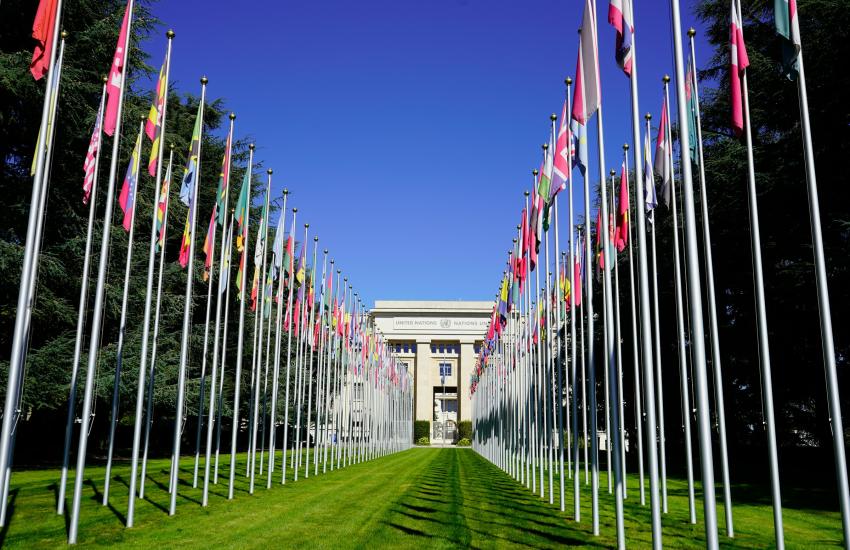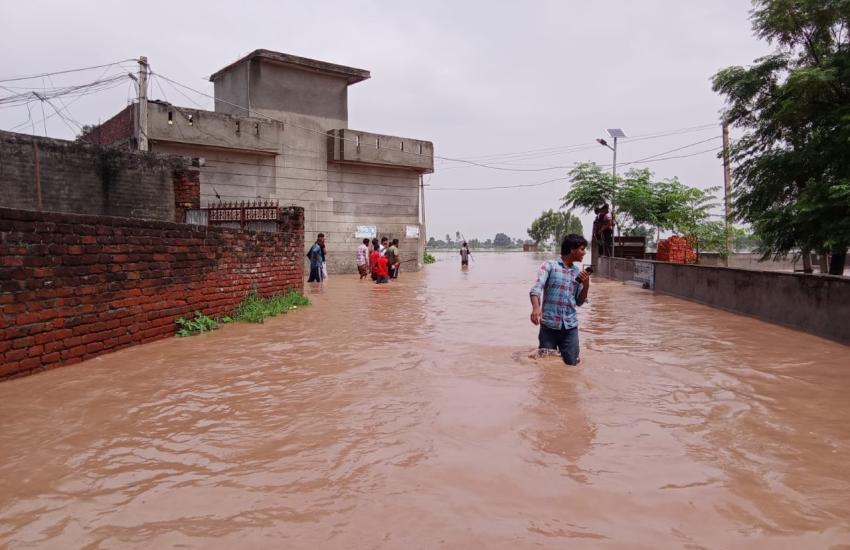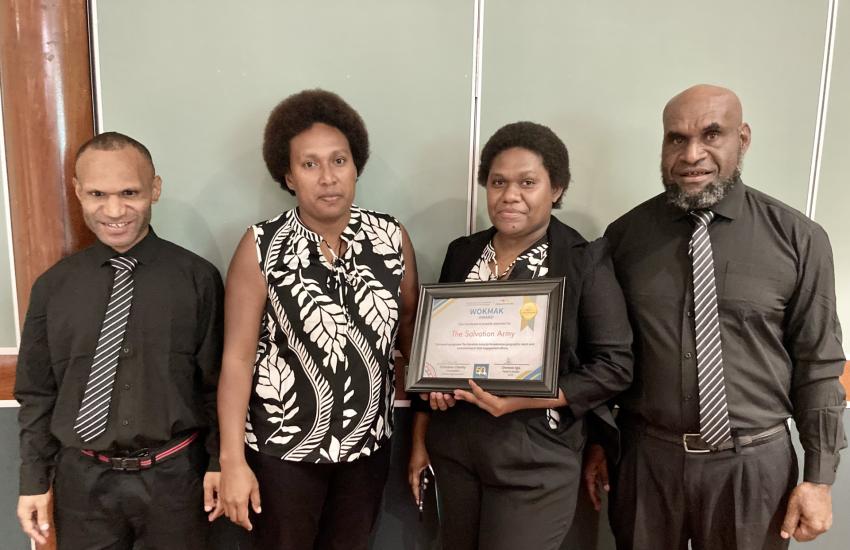AS The Salvation Army's disaster response in Nepal continues to grow, Damaris Frick – from The Salvation Army's International Emergency Services – has provided an overview of the many activities currently taking place, along with an insight into the way the international team is fully sharing with the people of Nepal, especially as they recover from a second major earthquake.
The relief operations underway can loosely be separated into urban and rural projects. Broadly speaking, the urban ministry – in Kathmandu, Bhaktapur and Lalitpur – is centred around camps for displaced people, including camp management roles and the provision of food, shelter and water. In rural areas, The Salvation Army is supplying food and shelter to remote communities in Ramechhap and Sindhupalchok Districts and around northern Gorka.
One truck of relief items has made its way to Nepal from the India Eastern Territory, including 700 12-litre boxes of water and 130 boxes of noodles, each of which contains 48 packets. So far the Nepal relief team has distributed about 150 boxes of water and 50 boxes of noodles. These items are mainly used for the camps The Salvation Army is involved in and for small scattered shelters. Another truck with 300 tarpaulins for shelter is on its way from Kolkata.
The relief team has provided food assistance to more than 700 households in Kathmandu, Bhaktapur, Lalitpur and Sindhupalchok. The food parcel typically consists of rice, dhal (lentils), oil and salt. Other distributions planned for the coming days for Ramechhap and Sindhupalchok will provide food parcels to 800 additional households. However, landslides after the second major earthquake have made some of the roads impassable and the team is working on alternative plans.
Through partners The Salvation Army has also been able to secure tarpaulins, distributing 143 so far. Another 70 are already assigned for distribution.
Shelter remains a major concern, especially with the monsoon season approaching. One thousand high-quality, weatherproof tents have been ordered in Pakistan and, thanks to assistance from the internatioal logistics company UPS, they will be transported to Nepal shortly. It has been possible to source food items locally, which is the ideal solution.
The Salvation Army has been asked to take on the responsibility of managing a number of camps. So far it has been allocated four camps (two of which have now been closed) but it is still providing support including food, shelter and non-food items to another two. The team has been asked to oversee another camp which needs assistance, which team members will visit to assess the needs.
A new project is being undertaken in the far north of Gorkha, where 8,000 people need food and shelter. It will be implemented in cooperation with MountainChild, a local non-governmental organisation (NGO) which has access to the helicopters needed to reach some of the most remote areas.
In Sindhupalchok, food has already been distributed – along with some non-food items such as solar lamps – but plans are being put in place to provide shelter to 1,000 households. The team receives assistance from MAF (Mission Aviation Fellowship) with helicopters to reach some of the remote areas.
The Salvation Army continues to carry out its response as part of the bigger humanitarian operation and is therefore making an effort to coordinate on national as well as district levels. It is registered as the main relief agency in certain VDCs (village development councils) and attends eight of the clusters organised by the United Nations to ensure effective cooperation and coordination.
The international response team in Nepal currently consists of: Damaris Frick (International Headquarters), Colonel Carol Telfer (Pakistan), Captain MacDonald Chandi (Pakistan), Captain Kathy Crombie (International Social Justice Commission), Captain Vanlaltluanga Pachuau (India Eastern Territory), Betsy Baldwin (from the USA-based Salvation Army World Service Office) and Michael Andrew (a volunteer from the USA). Two members of the team, Captain Joy Thang and Michael Mahabadra (India Eastern) have now returned home, as has the SAVN.tv film crew (USA Western Territory). International Emergency Services is currently working to source more deployees.
The international deployees are working closely with Majors Lalsangliana Vuite and Lalnunsangi Ralte, who oversee The Salvation Army's work in Nepal, with assistance provided by many young people connected to The Salvation Army (or the Salvation Mission, as it is known in Nepal). The local knowledge and contacts are proving vital.
Damaris says: 'You will all be aware of another earthquake which happened today. Most of us were somewhere on the road in Kathmandu, as we were getting several relief items to the airport. We also had two teams on an assessment mission in Sindhupalchok very near the epicentre. We were grateful when we could make contact with them via satellite phone and again when they came back safely.'
She adds: 'Every person in Kathmandu seems to be sleeping outside tonight, so we will take our mats and sleeping bags and do the same.'
To the many people who have shown concern, offered prayers and given generously to the work of The Salvation Army in Nepal, she has a final message: 'Thank you for all the interest and support from all over the world – this is greatly appreciated. Please continue to pray for our wonderful colleagues and for the lovely people here in Nepal.'
by IHQ Communications
(Based on a report by Damaris Frick)
International Headquarters





